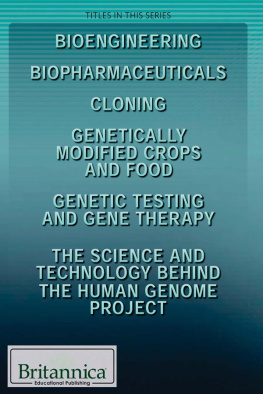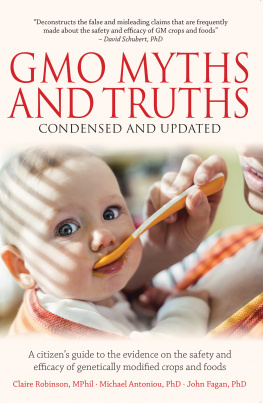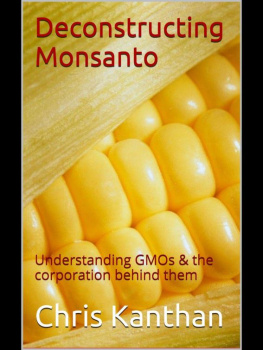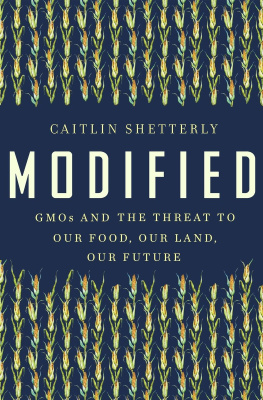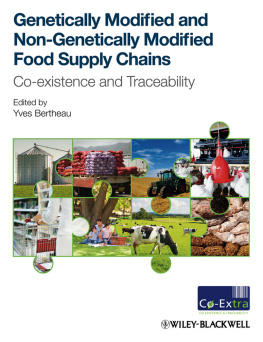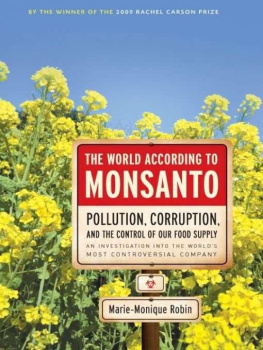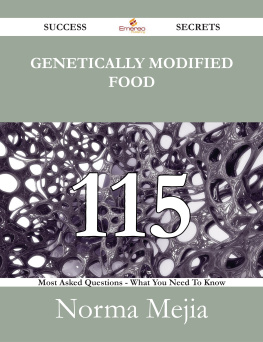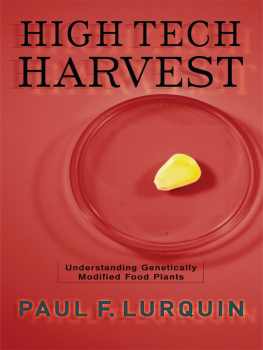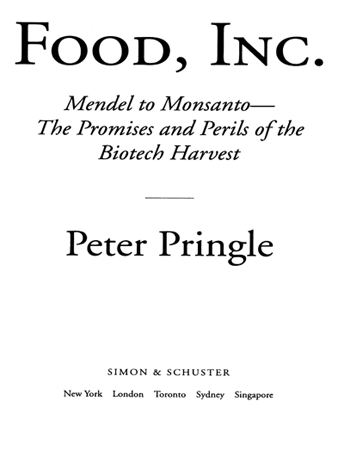FOOD, INC.

SIMON & SCHUSTER
Rockefeller Center
1230 Avenue of the Americas
New York, NY 10020
www.SimonandSchuster.com
Copyright 2003 by Peter Pringle
All rights reserved, including the right of reproduction in whole or in part in any form.
SIMON & SCHUSTER and colophon are registered trademarks of Simon & Schuster, Inc.
For information regarding special discounts for bulk purchases, please contact Simon & Schuster Special Sales at 1-800-456-6798 or business@simonandschuster.com
Manufactured in the United States of America
1 3 5 7 9 10 8 6 4 2
Library of Congress Cataloging-in-Publication Data
Pringle, Peter.
Food, inc. : Mendel to Monsantothe promises and perils of the biotech harvest / Peter Pringle.
p. cm.
Includes index.
1. Agricultural biotechnology. 2. Genetically modifed foods. 3. FoodBiotechnology. I. Title.
S494.5.B563P74 2003
363.192dc21 2003042823
ISBN 0-7432-2611-9
ISBN-13: 978-0-7432-2611-0
eISBN-13: 978-1-439-10384-5
To Eleanor, without whom this, and so much else of me, would not have been possible
CONTENTS
INTRODUCTION
This book is for those who still have an open mind about genetically modified foodsdespite the constant flow of alarms from consumer watchdogs and constant assurances from the agricultural establishment that everything down on the farm is lovely. Those who have already decided what to think should stop right here. This is not a book that will make them feel comfortable. Nor is it intended to persuade them to think differently.
Like other average consumers in this growing debate, I did not set out with strong opinions about genetically modified foods. Nor do my views fit easily now into either camp. I am persuaded that the biotech harvest has considerable perils, if done too fast or without proper regulation, but I can also see that it has considerable promise to relieve pain and hunger for millions of peopleif governments, industry, and overzealous sentries dont stand in the way. Too often, it seems to me, the public has been ill served by special interest groups who have sought to promote their products or press their rigid opinions rather than seek the wider interest of humanity. The middle ground, which I shall try to occupy in these pages, was strangely and rather eerily deserted in the summer of 2001 when I first set foot there, and remains to this day somewhat underpopulated.
A decade ago, Americans took their first bite out of a transgenic food. Scientists had found the ripening agent in a tomato that makes the fleshy part go soft, so they flipped the gene upside down and backward, as they put it. The modified tomato then had an extra few days before it started to rot in the normal fashion. The clever idea was to everyones benefit.
At the time, farmers were picking tomatoes from the vine when they were green and turning them pink artificially with a whiff of ethylene gas. This crude technique allowed the tomato to be picked unripe by machines and travel longer distances, thus making more money for farmers, food carriers, and supermarkets. Consumers were the only losers. The gassed tomato was hard and tasteless. By contrast, the new gene-altered tomato turned red on the vine without going soft, and the farmer had time to pick his crop by machine and get a handsome tomato to market. The new sort of tomato also had a sporting chance of tasting like the garden varieties of yesteryear.
Today plant breeders are still tinkering with tomato genes, but the real push in plant genetics has not been for the benefit of the average consumers taste buds or nutrition. Instead, biotech companies have concentrated on altering genes in staple crops like corn, potatoes, and soybeans to give them new defenses against pests and allow them to survive being doused by stronger herbicides. These changes have benefited the seed company, the chemical company (often now the same outfit), the farmer, and the food processor.
The biotech industry proudly points to the rapid rise in acreage planted to transgenic crops. A few million acres worldwide were planted with GM (genetically modified) seeds in 1996; by 2002 the acreage had expanded to more than 120 million. But this is still a tiny portiononly 1.3 percentof the total global cropland, and 99 percent of the total GM acreage was confined to only four countries. The United States grew 68 percent, Argentina 22 percent, Canada 6 percent, and China 3 percent.
Consumers ate corn and tofu without even knowing that they were gene-altered, since the products looked and tasted the same as the older versions and carried no special labels. What had changed in GM foods was inside the cells of the plant itself, but Americans, worrying more about fat content than any adjustment in cell structure, kept on eating the new products. Those who wondered how the agricultural folks were tampering with their foods ultimately put their faith in the Food and Drug Administration to ban any product that was harmful.
Elsewhere the new seeds were greeted with far more skepticism and even barred in some countries after environmentalists raised one alarm after the other. By 1998, the early success of the new technology had begun to turn sour.
The new crops, environmental groups insisted, were indeed different. They were Frankenfoods that could cause allergies in humans and mutations in pests. They could produce agricultural monstrosities, such as invasive superweeds. They could change the ecology of the planet in unpredictable and irreversible ways. They could destroy biodiversity. They could even cause the extinction of important wild plants essential for breeding staple crops. GM crops could destroy Americas favorite insect, the monarch butterfly, some warned, adding that these plants could also bring about the elimination of treasured songbirds from European hedgerows. In Europe and Japan consumers became so agitated about the new GM crops that their governments refused to approve the planting of the new crops pending further scientific studies.
The list goes on. Anti-GM forces discovered in taco shells genetically modified corn approved only for animal feed. They alerted the world to windborne GM pollen that threatened organic farms. Some went so far as to suggest that an alien gene used in most of the transgenic crops might cause cancer. The ultimate vote of no confidence in the new technology came toward the end of 2002, when African nations facing starvation turned away U.S. food aid because it contained genetically modified corn that, in their opinion, was poisonous.
To be an ordinary consumer caught in the middle of this turbulent battle was to be deeply confused. Few could unravel the conflicting evidence, as biotech companies desperately tried to sell their new products and ideological environmentalists worked with equal determination to stop them. On top of it all, religious and ethical groups warned of the dangers of competing with God in the garden.
Environmental groups warn that there are no quick fixes for food shortages in the developing world from this new technology and that indeed, biotech farming could make matters worse if used inappropriately. The global Norths industrial methods of farming cannot simply be transplanted to Asia, Africa, or Latin America and be expected to work efficiently. But transgenic plants that can grow in poor soils or survive in arid or tropical climates could have considerable direct benefits for the hundreds of millions of people in undeveloped countries who go to bed hungry every night. So far, however, these miracle foods have fallen short of the hype.




